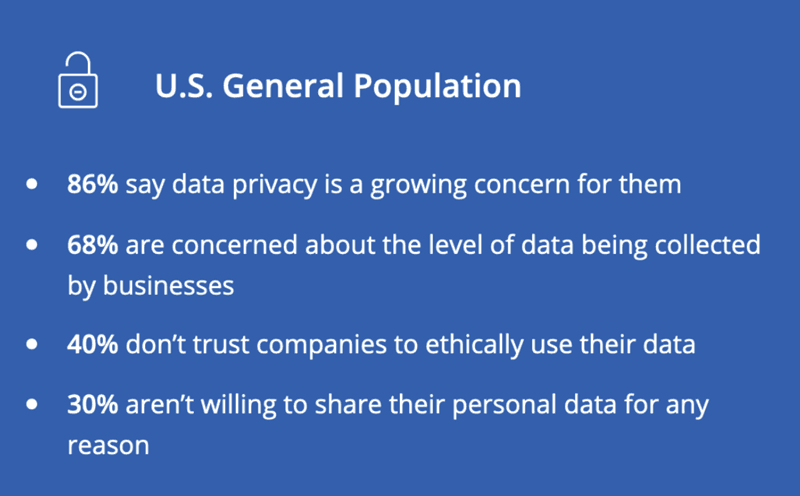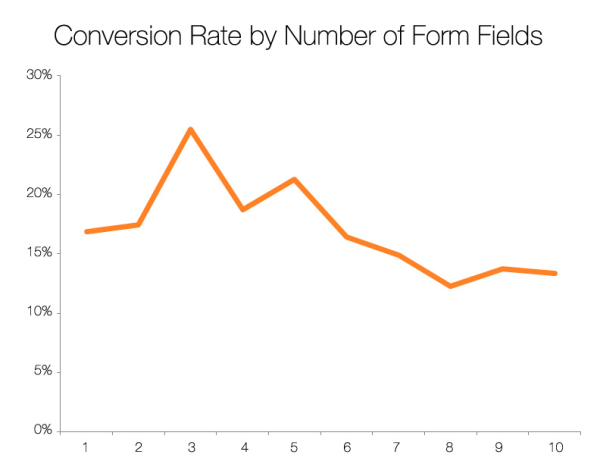A 2021 survey revealed that only 32% of U.S. internet users always consent to cookies when visiting websites. Additionally, 71% of countries have enacted data privacy and protection laws.
To say gathering data on potential customers is hard is an understatement. How do you target your potential customers without falling awry of the EU’s notably stringent General Data Protection Regulation (GDPR) if they don’t readily provide the information you need for effective content marketing? Bombarding potential customers with requests for personal information will only drive those customers away.
Fortunately, progressive profiling paves the way, allowing you to gather data and craft the exact messages you need to reach customers wherever they are in their journey. When you add it to your virtual toolbox, it’s like having the secret sauce to content marketing success. Let’s dig into what progressive profiling is and how to use it.
Understanding the Purpose of Progressive Profiling
At DivvyHQ, we’ve always relied on customer journey maps to guide our content marketing. We encourage our customers to do likewise because these maps work so well for us.
A customer journey map traces all the possible paths a potential customer might take from the moment of discovering your brand to the first purchase and beyond. Here’s the thing, though: How do you know what kinds of messages can reach these customers at each step along their journey?
Creating customer personas, of course, helps. Looking at demographics, likes, and pain points allows you to identify what kinds of content will drive customers toward a purchase. However, customer personas only get you so far without access to more personal information.
You can think of progressive profiling as a refinement tool for your customer journey map, allowing your team to collect data from potential customers at specific points along the customer journey. To motivate customers to provide that information, you offer them something of value, such as a white paper, an ebook, or another relevant resource.
What “Progressive” Means
Part of the magic of this approach is that you don’t ask for all the information at once. Not only are customers reluctant to provide personal information to companies they don’t know they can trust, but they also will run for the hills as fast as possible when confronted with a form that chews up their valuable time.
Source: KPMG
Instead of overwhelming your potential customers, you ask them for tidbits along their journeys and never duplicate requests. In other words, if you collect a prospect’s email address to access a white paper, you won’t ask for it again when you offer a discount. Instead, you can ask for another piece of data or ask the prospect to respond to a survey.
What It Means for B2B Customers
In B2B content marketing, progressive profiling provides the perfect way to break down the traditional silos between sales and marketing. As Kuno Creative’s Karen Taylor points out, content marketing teams can work together with sales teams to paint a better picture of their leads. When the content team nurtures those leads with valuable gated content, potential customers will likely have a favorable opinion about the brand from the get-go.
This approach makes account-based marketing a breeze. As you build a relationship with each decision-maker in your prospects’ companies, you can get the data that makes personalization possible.
Working with your sales team, you can obtain data that tells you where each decision-maker is along the buyer’s journey. Sharing data allows both teams to align and personalize their messages, leading to more relevant content, and creating a seamless experience for everyone involved.
What It Means for B2C Customers
Though most of the emphasis on progressive profiling across the content marketing community is on its potential to drive B2B sales, it works its magic equally well on B2C customers. In fact, companies have used progressive profiling with consumer markets for many decades.
A generation or two ago, marketers placed forms on the back of cereal boxes, enticed kids to mail requests to candy and gum makers (Remember Bazooka Joe?), and encouraged homemakers to send in their contact information in exchange for a free recipe book.
Even today, if you’re ever asked to fill out any sort of rebate form to get a discount on something, that’s a B2C company’s way of filling up their prospect and customer database.
How It Works With Automation Technology
Today’s content automation technology allows you to put the entire progressive profiling process on autopilot. In more practical terms, you won’t need an on-site team of clerks to get people to fill out rebate forms, mail stuff out to customers, or even dedicate personnel and time to email responses.
Your team can deploy digital campaigns to hundreds or thousands of customers simultaneously. The beauty of localization and online behavior data is that they allow you to present or send an offer at just the right time — when your prospects are online.
If you use retargeting for your e-commerce platform, you can use the information from progressive profiling to create more accurate product suggestions. This way, your suggestions will more likely be for products your prospects are interested in, want, or need to solve a problem.
Using the Process To Boost Conversions?
As SmartBugMedia’s Amber Kemmis puts it, “Progressive profiling is a lot like dating.” Just as you wouldn’t want to ask probing questions or ask for a commitment on the first date, you should limit your asks to only the bare minimum of data in your first interactions with your prospects.
The numbers bear that observation out. A HubSpot study found that conversions dropped dramatically when the number of fields included in a form increased from three to four. In fact, three data fields are, it seems, the sweet spot regarding customer data requests.
Source: HubSpot
As you build your relationship with prospective customers, you can ask for more detailed data. With progressive profiling, you don’t need to ask for a ton of information all at once or even further down the road in the prospect’s customer journey. Today’s data capture and automation capabilities allow you to build a picture of each customer’s needs with only a few pieces of data at a time.
As your information grows, it can fill in some of those missing links in your customer personas. Conversely, your customer personas can suggest some of the data you need to move the customer to the next step on their journey.
Furthermore, you can use your website and content analytics to understand each potential customer better. Combine data customers provide on the forms with information about their online behavior, demographics, and engagement with your social media posts.
Streamlining the Customer Journey With Progressive Profiling
Prospective customers don’t like marketing campaigns that waste their time. While researching an article that dealt with content marketing for health care companies, one of our colleagues needed a piece of gated content — a white paper — to complete her research. So, she sent in her email address to get the information she needed.
That healthcare equipment company whose white paper she needed hasn’t stopped hounding her to this day, mistaking her for a nurse. They could have identified her as a non-prospect if they had used progressive profiling. On the other hand, if she had actually been a nurse, they could have sent her information to pass on to her equipment purchasing team about their products.
Using all the tools and strategies at your disposal to simplify and streamline your content strategy and your prospects’ customer journeys makes more sense than ever today. You can do just that with a comprehensive content marketing platform that allows you to integrate every aspect of your content marketing.
With DivvyHQ, you can combine the data you glean from progressive profiling with your own analytics to create content your prospects simply can’t resist. Request a demo to see simplicity in action.


